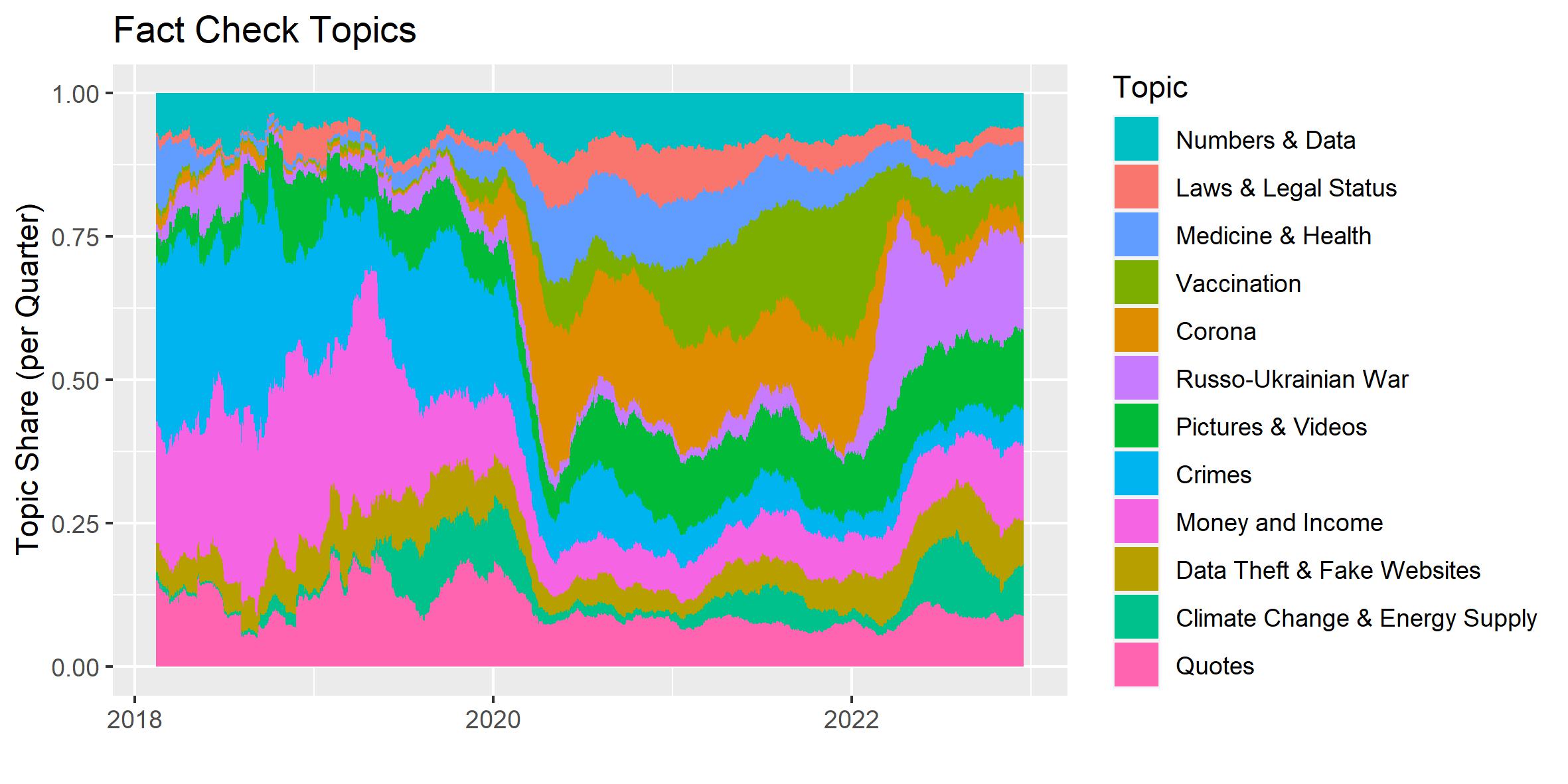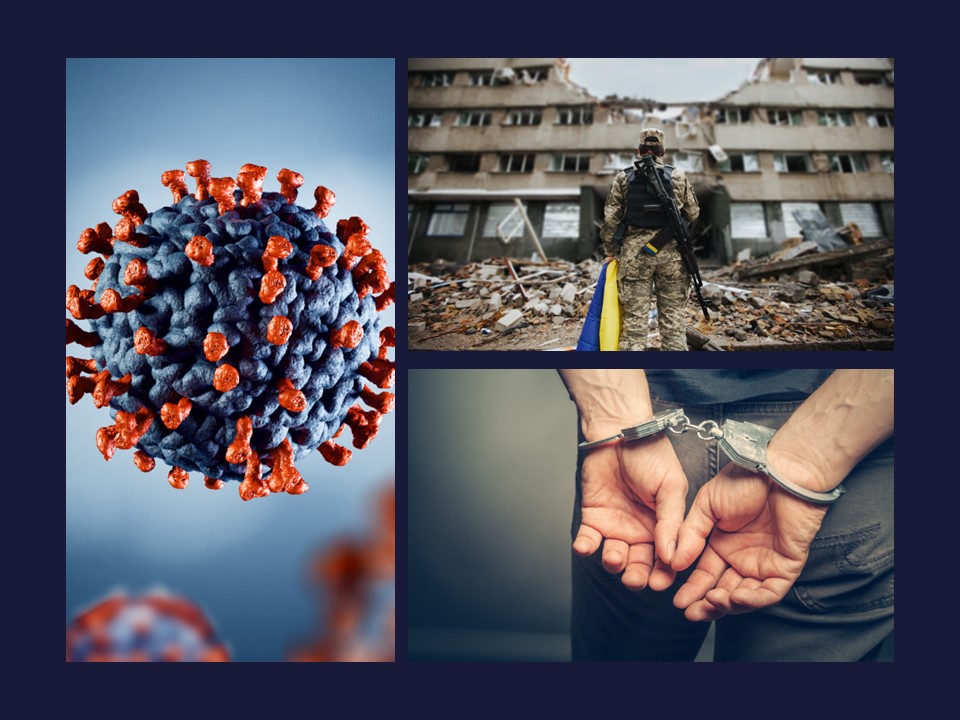“COVID is no more dangerous than the flu”, “masks are harmful to health” and actually “it is the vaccination against the virus that makes people ill”. Social media has been rife with misinformation about pretty much every aspect of the COVID-19 pandemic since it was confirmed that a previously unknown pathogen had appeared in the Chinese metropolis of Wuhan.
This plethora of claims also had a major impact on the work of the fact-checking teams of AFP, APA, DPA and CORRECTIV. This is shown by a first evaluation of the topics that were dealt with by the GADMO fact checkers in the past years. In order to be able to classify the 5,000 or so texts that were created by January 2023 according to (over-)topics, the GADMO research team at the TU Dortmund University used the statistical topic modelling method LDA. In simplified terms, words that occur particularly frequently together are automatically assigned to a topic. In this model, the texts then consist of one or more topics, depending on which topic the words are assigned to in the text. The researchers have no influence on the composition of the topics themselves, they only specify how many topics the algorithm should search for. In a next step, the team then named the topics based on the words and texts that are particularly specific to the topic. This makes it possible to show which topics produced a particularly large number of fact checks at which point in time (see figure).
Fewer fact checks on the topics of Crimes and Money & Income
It is striking that the fact checkers wrote significantly fewer texts on the topics of Crimes and Money & Income with the advent of the Corona pandemic. This is interesting because in both topics the fact checkers often check allegations in which foreigners, people with a migratory background or refugees appear and are portrayed in negative contexts. For example, they are named as perpetrators in real or fictitious crimes, or it is claimed that asylum seekers receive significantly more benefits than German recipients of social benefits.

From the second quarter of 2022 onwards, the share of these two topics drops significantly in favour of the three Covid-19 topics Corona, Vaccination and Health & Medicine. In particular, the last topic, which contains fact checks on mask-wearing or alternative treatment methods (for Corona diseases), already has a visible share in several quarters before the start of the pandemic. Before the Covid-19 pandemic, this topic contains texts dealing with alternative cancer treatments, for example. The fact that topics have a share, albeit a small one, over the entire observation period is due to the nature of the LDA procedure. For example, the terms virus, disease and infected are assigned to the topic Corona, but were also used before the start of the Corona pandemic, which explains the small but visible shares before 2020.
Possible reasons for changes in topic shares
The same phenomenon can be seen in the topic Russian-Ukrainian war, which displaces part of the fact checks on Corona topics after the Russian invasion of Ukraine. Since the situation in the Donbas had already been reported on before and words such as Russia or Putin are also assigned to this topic, there are already rashes of the topic before 2022.
In addition to the topics already mentioned, whose shares are strongly linked to specific events, the model was also able to identify topics that have a more even share over the entire period: Laws & Legal Status, Data Theft & Fake Websites, Climate Change & Energy Supply, Quotes, Pictures & Videos, Numbers & Data. While the first three topics examine claims that have a common thematic focus, the last three topics have formed because the nature of the misinformation is similar. For when a fact checker examines a quote that is circulating through the social networks, terms such as said, quote or speech are very likely to appear in the text. There are also similar clusters of terms when fake pictures and videos are examined or the fact checkers check whether numbers can be interpreted in the way they are in a Facebook post.
Looking at the topics of the fake checks is only the first step in the analysis. For example, it is not yet clear why the described changes in topic shares are happening. Were fewer claims with racist or xenophobic undertones spread with the onset of the pandemic and are false reports on Corona no longer such a big issue after the invasion of Ukraine? Or has the focus of the fact checkers merely shifted? The researchers want to answer these and other questions in the coming months.



